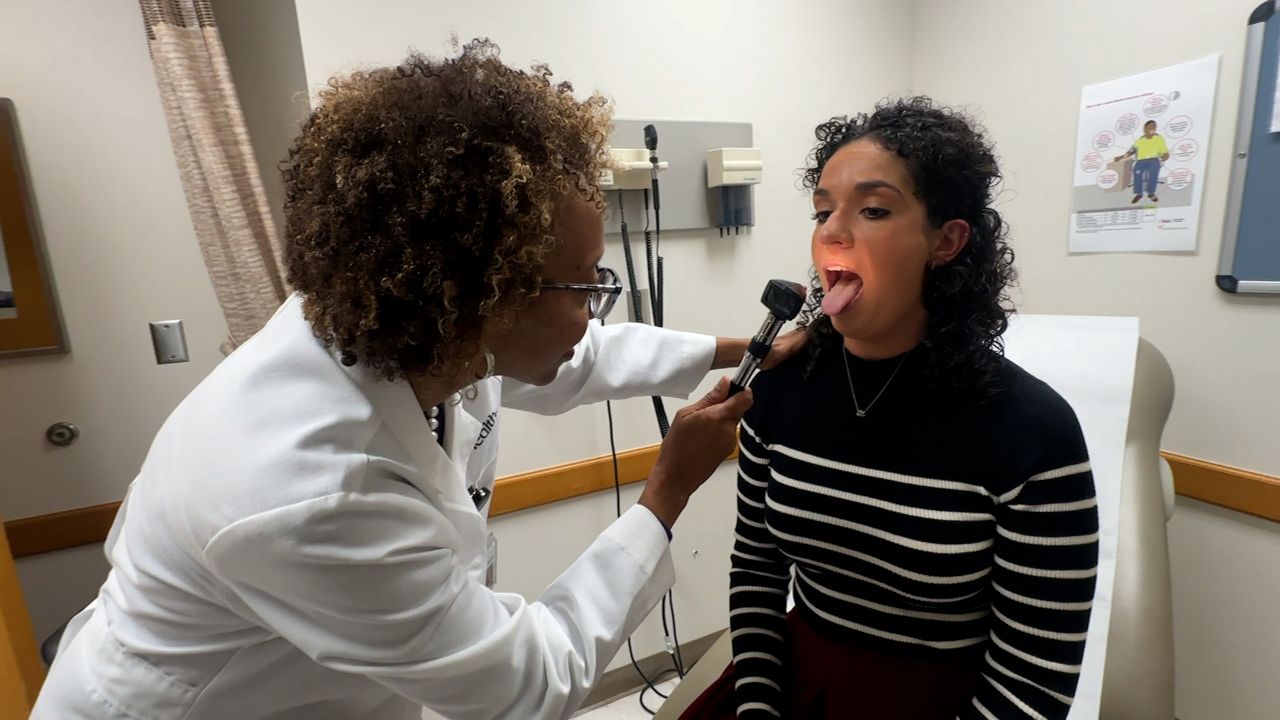Sports
I-Team: Connecticut sports physicals may miss life-threatening heart conditions

(WFSB) – Before any high school athlete steps on the field this fall, they are required in Connecticut to have a pre-participation physical. However, one Windsor family learned that physical does not necessarily mean a student is safe to play.
At 6′5″ and more than 290 pounds, 15-year-old Elijah Rivera was growing into his own strength.
“He was the youngest, and the biggest,” said Jay Rivera, Elijah’s dad. “He literally ripped the handle off the microwave, just opening the microwave.”
Elijah was learning to channel his power as a Windsor High School football player. At practice on October 10th 2023, he collapsed.
“I got there within minutes. I was there within 2, 3 minutes,” said Jay Rivera. “Everything just happened so just fast. It was just kind of difficult to remember all of that.”
Elijah died at the hospital. His family later learned Elijah had an enlarged heart. Elijah had passed his required pre-participation sports physical the previous summer.
“When we talk about the sports physicals, it’s more like a check-off sheet right now. I feel like there needs to be more for kids,” said Rivera.
The sports physical required for Connecticut student athletes includes a questionnaire about family history and an examination by a physician.
Dr. Allison Crepeau was not Elijah’s doctor. She is an orthopedic surgeon who specializes in pediatric sports medicine. She explained what the pre-participation physical does.
“Just checking eyesight, hearing, your vital signs, and then a heart and lung exam. There’s a basic orthopedic exam just to kind of examine all the joints, make sure there’s no major concerns,” said Dr. Allison Crepeau. “It basically checks pulses, checks breathing, and then you listen to the heart and check for any murmurs or any arrhythmias, things like that.”
Dr. Crepeau says if there is a risk factor identified in the exam, the next step would be an EKG or an electrocardiogram which is an ultrasound of the heart.
“That’s one of the things I think that’s important to talk to your pediatrician about. It’s one of the things that hopefully if there are any concerns, that would get pulled out in the family history section,” said Crepeau. “Right now, it’s not required in Connecticut because it just hasn’t panned out that every single student needs to have that done, unless there’s a concern.”
Representative Nicole Klarides-Ditria says the idea of requiring additional heart testing for student athletes has been researched by the Connecticut legislature several times. She says the research hasn’t led to legislation because of the cost.
“It’s the insurance issue. Insurance doesn’t cover that as a pre-participation physical,” said Klarides-Ditria. “That would have been a huge cost incurred on families, and especially if it wasn’t covered by insurance.”
Jay Rivera says the doctor never suggested additional heart testing for his son. Additional testing may have saved his son’s life.
“It shouldn’t be an insurance company or somebody saying we’re not going to pay for that because there’s no need for it,” said Rivera. “I feel like we should know more about how these kids, their bodies react to that before we put them on the football field or the basketball court.”
Rivera hopes the strength of Elijah will strengthen our understanding of sudden cardiac death.
“Let’s talk about it. Let’s be more open about this. Let’s discuss this because it’s out there and it’s something we need to be aware of,” said Rivera.
The Riveras are working on creating a foundation called “Always 65″ that will focus on educating parents and schools on the signs of sudden cardiac arrest.
There are nonprofits in Connecticut that offer free cardiac screenings for student athletes.
There is a clinic offering free screenings for student athletes next month in Branford.
This is part 2 of an investigation into student athlete safety in Connecticut. Click here for part 1.
Copyright 2024 WFSB. All rights reserved.








